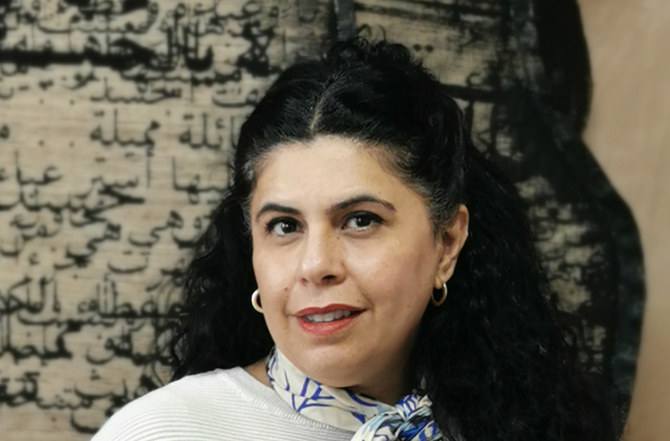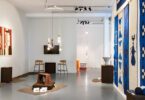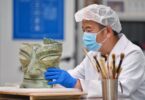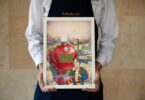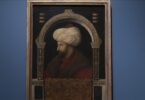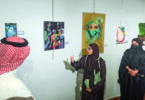Rawaa Talass
DUBAI: For decades, the iconic spiral rotunda of New York’s Guggenheim Museum, designed by famed US architect Frank Lloyd Wright, has been used for large installations, poignant performances by artists, and social demonstrations.
So when acclaimed Saudi artist Manal AlDowayan was approached by the museum’s Middle Eastern Circle team to stage her own work at the venue, she realized the weight of history that came with the offer.
“I wanted to present something that was significant, because I’m the first from the Gulf to show there,” AlDowayan tells Arab News.

On May 22, she put on a one-night-only participatory presentation — “From Shattered Ruins, New Life Shall Bloom” — that was attended by 750 people. AlDowayan placed a number of cylindrical fabric totems on the ground, on top of which were hundreds of delicate porcelain paper scrolls, akin to the outer shell of a hollow egg. As per the artist’s instructions, the scrolls would be crushed by attendees.
AlDowayan, whose artistic career began over two decades ago in Saudi Arabia, has often interacted with people from her community, reaching out to women and craftspeople to play a part in her work, including photography.
“I find participation is a very beautiful exchange between the artist and the community,” she says. “The distance between me and the community is so huge that only through this participation can we get close to each other.”

Her Guggenheim installation was inspired by an earlier work of hers from 2019, when she presented a solo show in Madrid called “Watch Before You Fall.” In it, she showcased totems that showed Arabic writing. One piece read, “I wonder, do you see me?” and another said, “I am here!” That show took place just two years after the Kingdom had started introducing important changes for women in Saudi society, allowing them freedoms that AlDowayan didn’t get to experience herself when growing up there.
“I’ve been traumatized by what has happened — living under so many years under this intense stress, being invisible — which (inspired) my whole practice: questioning the public sphere, and women having to exist in ‘the counter public.’ Women were hiding in the public space. I used this show to heal. I used totems, in which I put (images) of books that were written by religious men to instruct women on how to behave in the public space. Because public space, in their head, was for them and not for us,” she explained. “I remember telling my gallerist that my dream was to fill a full museum floor with the totems.”

Now, that dream has come true. In her New York show, according to a press release, the scrolls “illustrated narratives that have for generations upheld structures oppressing women and girls.” Instead of focusing solely on Arabic texts, AlDowayan looked through the museum’s archive, nearby newspaper stands, and Christian books, among other material about women, for inspiration.
“I started thinking about the feminist movements coming out of the United States that absolutely ‘othered’ our feminist movements in the East and South East,” she says. “We need to look at other feminist movements as collaborators. We will not rise as women without thinking that way.”
The artist printed some of the pages from her research on the scrolls, which the audience then demolished.
“The concept was to use your hands – it’s in your hands. You can really change things. I wanted to give power to the audience,” AlDowayan says.
She has kept the ‘confetti’ from the scrolls and says the pieces might be reincarnated in a future project.
AlDowayan admits she was nervous about the turnout before the show. “It’s exactly like throwing a big party in your house. I was very anxious about who would come — would anybody come? Does New York want to interact with my ideas, because sometimes Americans are very insular in their thinking and they might come to my performance and feel very offended,” she said.
She need not have worried. One aspect of the event, in particular, hit home for the artist.
“I was surprised by the number of Arab women that attended,” she says. “They came together in groups — sisters, best friends, and schoolmates. I was very moved by that.”
Courtesy: arabnews

